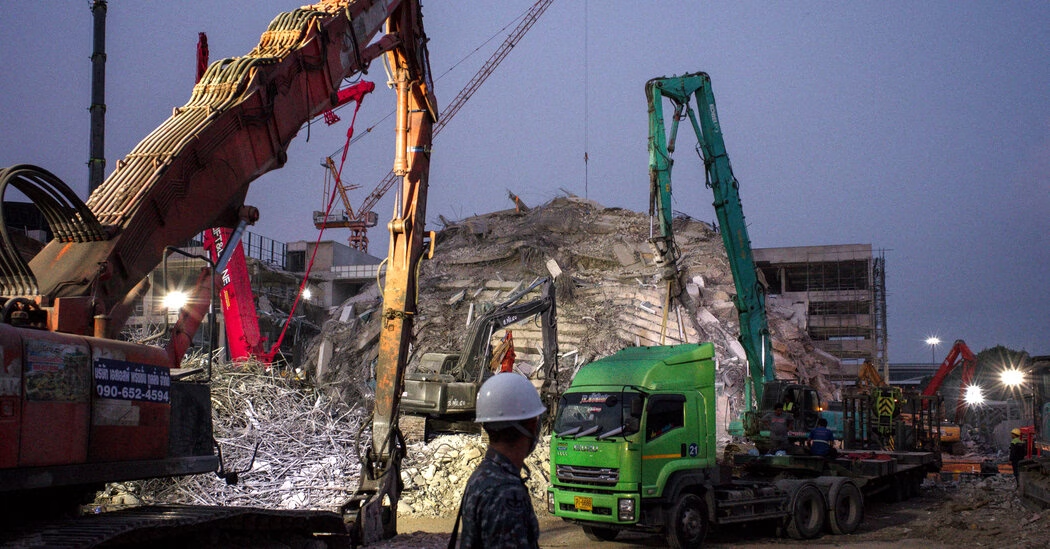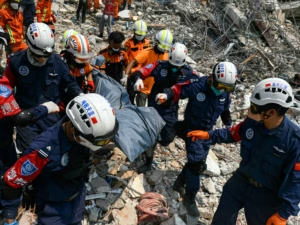A 30-story building collapsed in Bangkok following a distant earthquake that struck Myanmar, an event that has raised concerns about the safety standards and practices of international construction companies in Southeast Asia.
The earthquake, which was felt hundreds of miles away in Bangkok, led to at least 15 deaths and dozens missing. While only one building came down, initial investigations point to potential problems with the construction design and quality, particularly focusing on the involvement of China Railway 10th Engineering Group, a Chinese state-owned enterprise with a dozen projects in Thailand.
Workers interviewed by The New York Times highlighted construction shortcuts, such as underpaying contractors leading to the use of substandard materials and narrower than normal columns. Thai officials testing the debris discovered low-quality steel provided by a Thai factory with Chinese owners that had previously been shut down for safety reasons. There were also allegations of corruption and oversight failures, with an anti-corruption watchdog having previously raised concerns about the building’s construction.
Prime Minister Paetongtarn Shinawatra ordered authorities to investigate all projects involving China Railway 10th, emphasizing the need to provide transparency and accountability to the public and the international community. She did not specify whether the parent company, China Railway Group, would also be investigated.
China Railway Group, known for building much of China’s high-speed rail network, has been accused of pursuing projects aggressively to cope with its soaring debt. In 2019, the company acquired a gold mine in the Solomon Islands where local workers reported ignored safety issues.
The building’s collapse also came amid a context of behind-schedule construction and concerns about Chinese contractors disregarding local standards and using low-quality materials to cut costs. A point of particular interest is the detection of weak steel that failed quality tests, which further compounded structural vulnerabilities.
While the exact cause of the collapse remains under investigation, the incident has sparked public outrage and scrutiny of Chinese investment and construction practices in Thailand, casting a spotlight on the balance between economic growth and safety standards. The event may exacerbate existing tensions over Chinese business practices and government dealings in the region.
Source: https://www.nytimes.com/2025/04/02/world/asia/earthquake-bangkok-collapse.html




